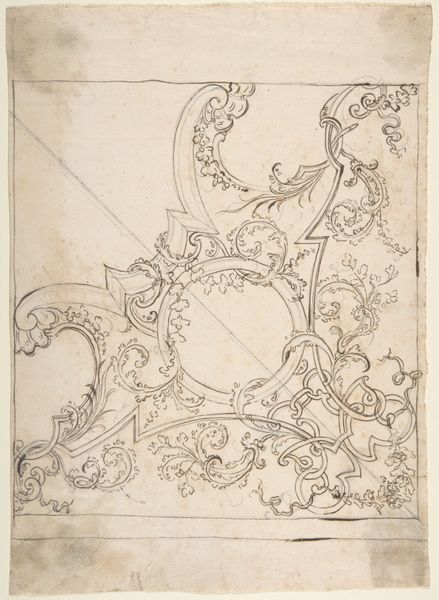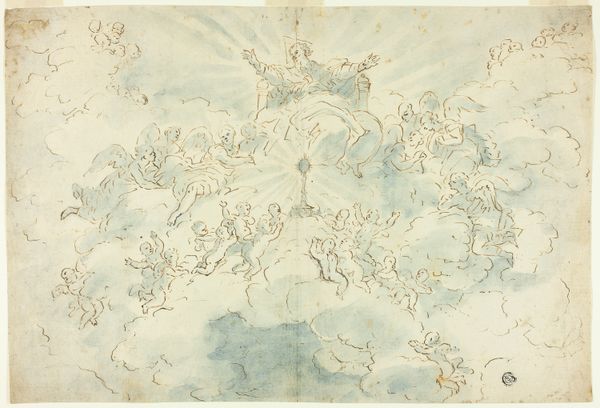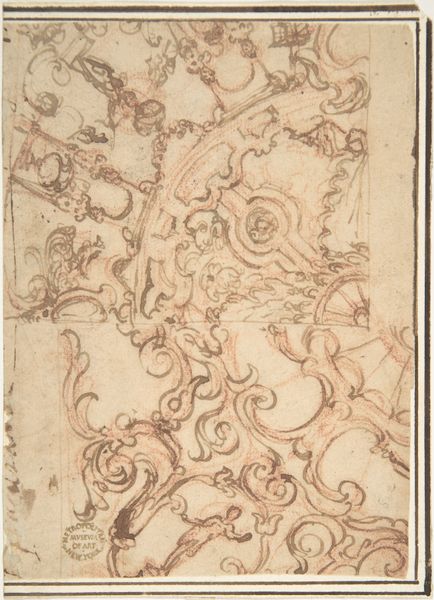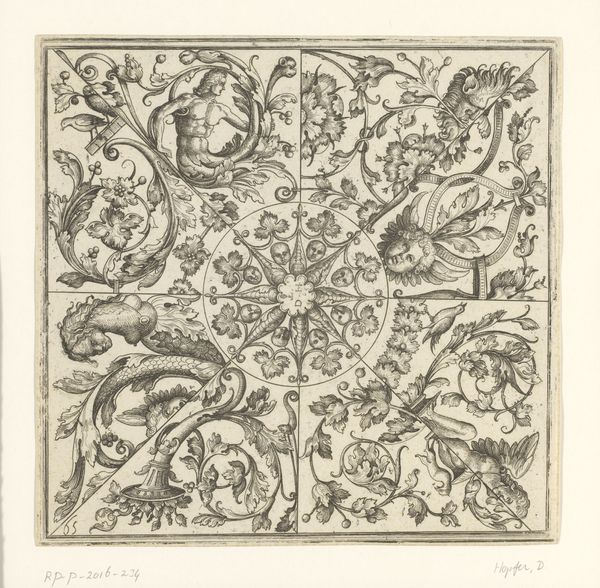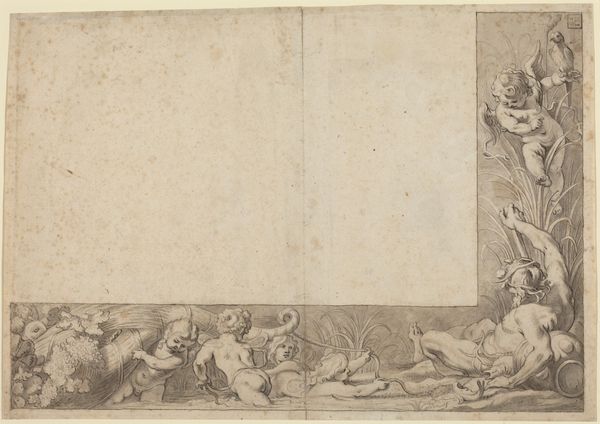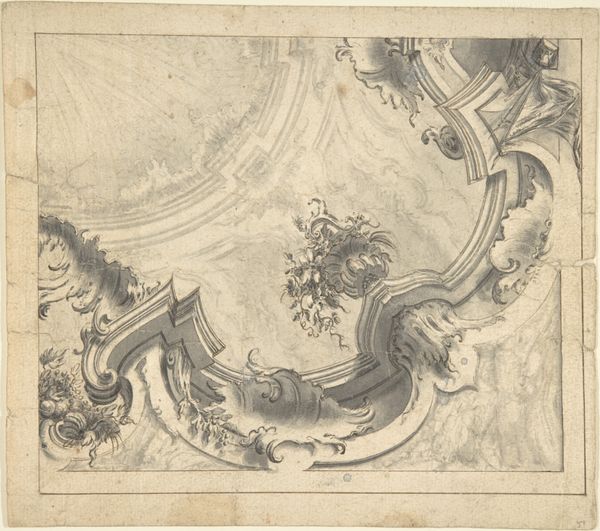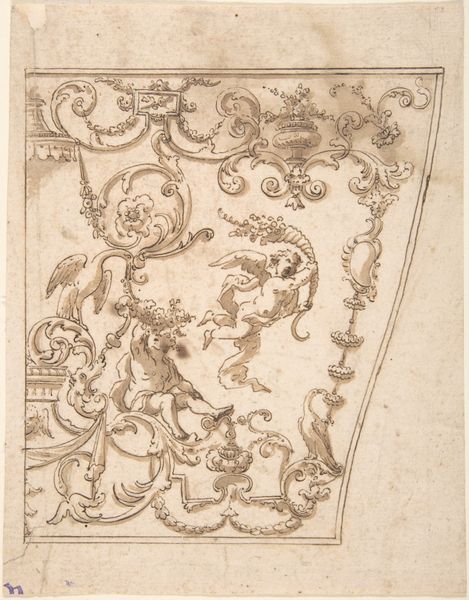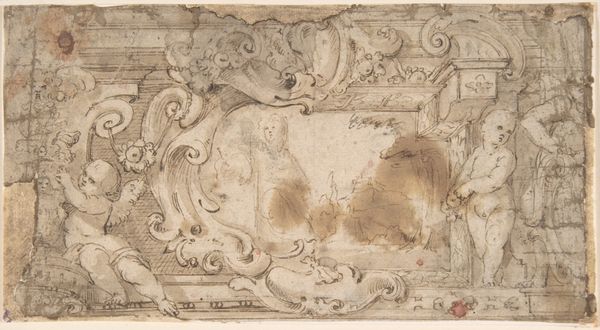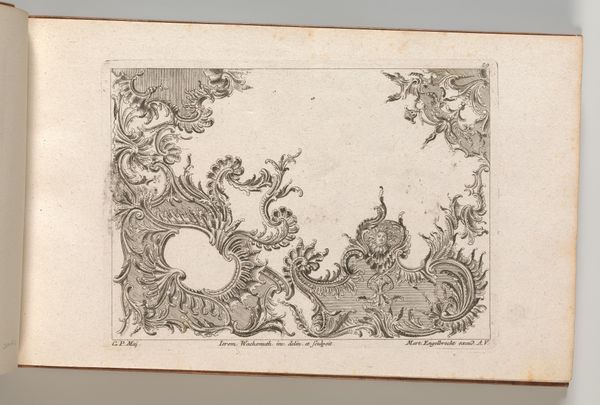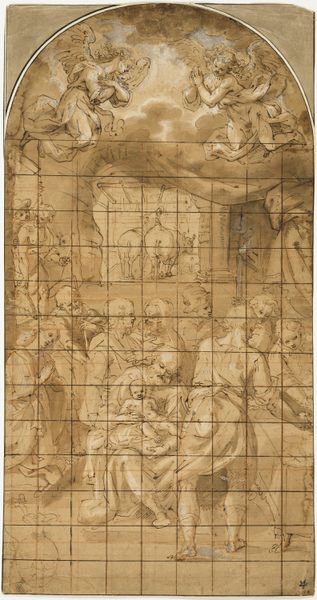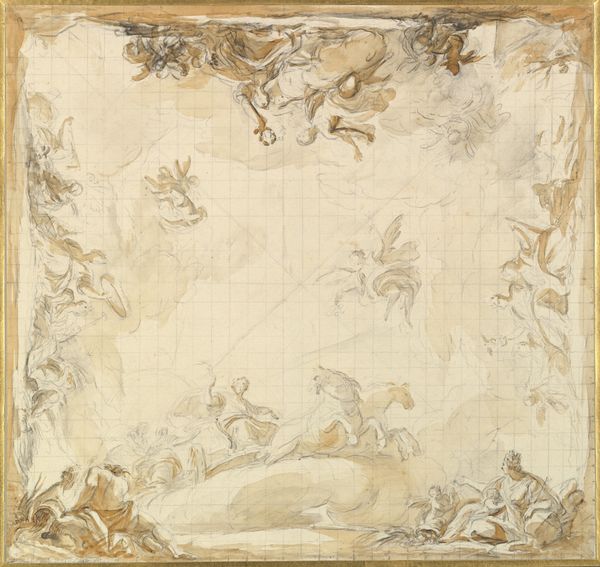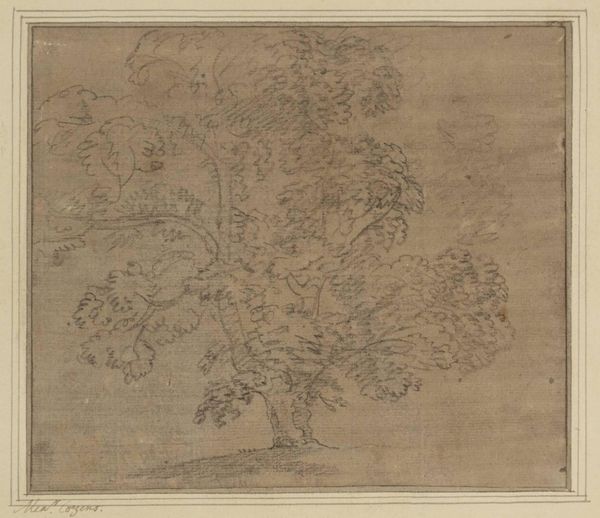
drawing, print, paper, watercolor
#
drawing
# print
#
paper
#
form
#
watercolor
#
coloured pencil
#
line
#
decorative-art
#
rococo
Dimensions: 16-1/4 x 17 in. (41.2 x 43.2 cm)
Copyright: Public Domain
Curator: This work, currently held at the Metropolitan Museum of Art, is a design for a framing motif, rendered in watercolor and print on paper. The artist is Francesco Guardi. Editor: My first impression is of lightness. There's this almost airy quality to the drawing, even though the subject itself suggests weight and permanence – a frame. It's like a breeze captured on paper. Curator: It’s interesting that you pick up on lightness. Guardi, of course, was immersed in the Venetian art world, where elaborate decorative arts and, specifically, rococo designs were en vogue. The labor behind it would’ve been much more strenuous. Imagine all of these delicate motifs reproduced painstakingly! Editor: Precisely! It speaks to this contradiction within rococo itself: the desire to appear effortless while requiring immense craftsmanship. Consider the specific material choices: the paper itself, perhaps sourced locally, the inks imported for vibrancy... even the humble watercolor brush carries the weight of tradition. What does the frame say to you, looking at it as the artist? Curator: For me, frames are boundaries, portals to a secret. What goes inside versus what goes out is always the magic ingredient for art. In my art, at least, there’s an energy field I'm hoping to ignite for a viewer, a resonance—like music. Here, Guardi teases the unfulfilled space with possibility; a canvas waiting for its scene. Editor: I'm intrigued by your notion of boundaries. Because while the artwork implies containment, it also directs your eye outward—to the edges, to the craft that holds the potential picture within. What happens when the frame itself becomes the primary focus, instead of the artwork it surrounds? I see the role of craftsmanship here – how each individual repetition plays a part in establishing value and aesthetics. Curator: That’s precisely why it still captivates today: It demands that question. It prompts an interior reflection but then gently kicks you outward to ask broader questions about the role of art and decoration and how a picture – and indeed a society – are framed. Editor: Beautifully said! It is quite profound that this functional and decorative design prompts reflection and, like you suggested, poses fundamental inquiries about culture and the creative practice.
Comments
No comments
Be the first to comment and join the conversation on the ultimate creative platform.
